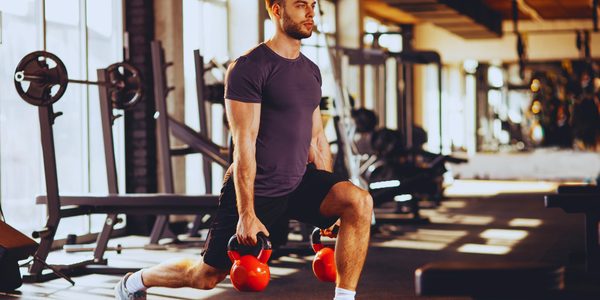Try These 3 Moves to Test if Your Core is Actually Strong
Discover if you have a strong midsection with this Core Strength Test featuring three essential moves. Learn proper form and assess your fitness level in minutes
https://www.youtube.com/watch?v=Y5_IWLhTAzU
Did you know only 15% of adults can pass a perfect core strength test? Most people don't really understand what true core strength is. It's not just about sit-ups or planks. It's about how well your whole body works together.
Core strength is key for everyday activities. It helps connect your body's four main parts. When you run, climb, or push, your core keeps everything stable. But, traditional exercises often miss the mark.
To really check your core strength, you need to use specific tests. These three moves will show you how well your core is doing. Good core workouts can boost your fitness and keep you safe from injuries.
Key Takeaways
- Core strength involves more than just abdominal muscles
- Traditional tests may not accurately measure functional core performance
- Proper technique is crucial in core strength assessment
- Core strength connects upper and lower body movements
- Comprehensive testing reveals true muscular coordination
Understanding Core Strength Beyond Basic Exercises
Core strength is more than just doing crunches. It's a complex system of muscles that helps you move and stay stable. Learning about your core can boost your fitness and keep you injury-free.
What Makes Up Your Core Muscles
Your core isn't just about six-pack abs. It includes muscles from your shoulders to your pelvis. These muscles are key for stability:
- Transversus abdominis
- Diaphragm
- Pelvic floor muscles
- Erector spinae
- Multifidus muscles
Why Traditional Core Tests May Be Misleading
Tests like crunches don't fully show your core strength. Evaluating core endurance needs a broader approach. It should check how well your muscles work together.
The Role of Core in Daily Movement
Stability ball drills show how vital core strength is for daily life. Strong core muscles can:
- Lower the risk of lower back pain
- Improve body balance
- Boost athletic performance
- Support better posture
About 80% of adults suffer from lower back pain. This shows how important it is to train your core well to stay healthy and avoid injuries.
Core Strength Test: Essential Moves for Assessment
Discovering your true core strength is more than just doing ab crunches. You need tests that check stability, strength, and how well your muscles work together. These home fitness exercises for men can show you how strong your core really is.
- Plank test for stability
- Pushup test for strength
- Back extension test for muscle endurance
The pushup test gives you a full view of your core's function. Start in a pushup position, keeping your body straight from head to heels. Aim to do as many pushups as you can while keeping your form perfect. Good form shows your core muscles are working well and you have strong upper body strength.
| Test | Key Measurement | Performance Indicator |
|---|---|---|
| Plank Test | Stability Duration | 3+ minutes indicates excellent core strength |
| Pushup Test | Repetition Quality | 15-20 consecutive perfect pushups shows robust core |
| Back Extension Test | Muscle Endurance | Holding position for 60+ seconds demonstrates core resilience |
These tests need to be done right. If you have back issues or health problems, talk to a doctor before trying these tests.
Conclusion
Your core strength assessment is more than just exercises. It's a way to understand your body's fitness potential. The three moves we've looked at give a full view of your core stability. This shows insights that go beyond just muscle tests.
Research with twenty healthy active people shows how complex core strength is. It's not just about how strong you are.
Using these core strength tests can really boost your physical performance. The functional fitness evaluation methods we talked about are based on science. They help you understand your core's abilities.
These tests show how well your muscles work and how stable you are. They give you reliable information about your strength and endurance.
Adding these tests to your workout routine can prevent injuries. It also makes your daily movements better. The chance of getting low back pain is lower if your core muscles are strong.
Start your journey to a stronger body by doing these core strength tests regularly. Understanding and working on your core muscles is key to better fitness. Remember, regular checks and focused training can change your physical abilities and health for the better.
FAQ
What exactly is core strength?
Core strength is about the muscles in your torso working together. They help support your body's movements and keep you stable. It's not just about your abs; it includes muscles all around your trunk.
Why are traditional core tests like planks not enough?
Traditional tests focus on single muscles and still positions. They don't show how core muscles work in real life. Functional core strength is about dynamic stability and power transfer.
How do these three moves test core strength differently?
Pushups, birddogs, and half getups test core strength in different ways. They challenge stability and coordination. Unlike static exercises, these moves test core function in complex movements.
Can anyone do these core strength assessment moves?
Yes, these exercises are designed to be accessible. But, everyone should start with what feels right for them. Beginners might need to start easier or get help from a fitness pro.
How often should I test my core strength?
Test your core strength every 4-6 weeks. This lets you see progress and check your fitness regularly.
What muscles are involved in core strength?
Core strength involves many muscles. This includes the rectus abdominis, transverse abdominis, and obliques. It also includes the erector spinae, multifidus, and pelvic floor muscles. These muscles work together for stability and support.
How does core strength impact daily activities?
A strong core improves posture and reduces back pain. It also enhances balance and makes everyday movements safer and more efficient.
What if I can't complete the full test?
Don't worry if you can't do the full test. These tests help you understand your fitness level. Use modified exercises and practice regularly to build strength.
Are these moves better than traditional ab exercises?
Yes, these functional moves are better than isolated ab exercises. They work multiple muscles, improve coordination, and mimic real-world movements.
Can improved core strength help prevent injuries?
Absolutely. A strong core provides better stability, reduces spine strain, and helps distribute stress during activities.
Source Links
- 5 Easy Ways to Test Core Strength - wikiHow
- 3 Ways to Test How Strong Your Core Is
- Why your core muscles matter
- Importance of Core Strength: 11 Benefits of a Strong Core
- Core Stability Training for Injury Prevention
- Exercises to improve your core strength
- 3 Core Strength Tests To Find Weaknesses
- VALIDATION OF TWO CLINICAL MEASURES OF CORE STABILITY
- Reliability of an adapted core strength endurance test battery in individuals with axial spondylarthritis
👉 Join the Active Man Community
Get expert tips, workout guides, nutrition hacks, and the latest trends delivered straight to your inbox every week. No spam — just actionable insights to help you live stronger, healthier, and better.





